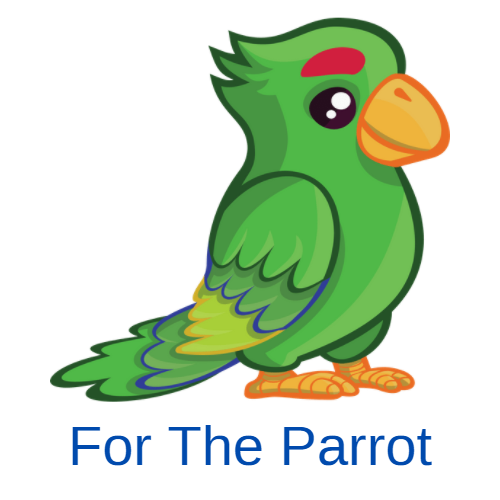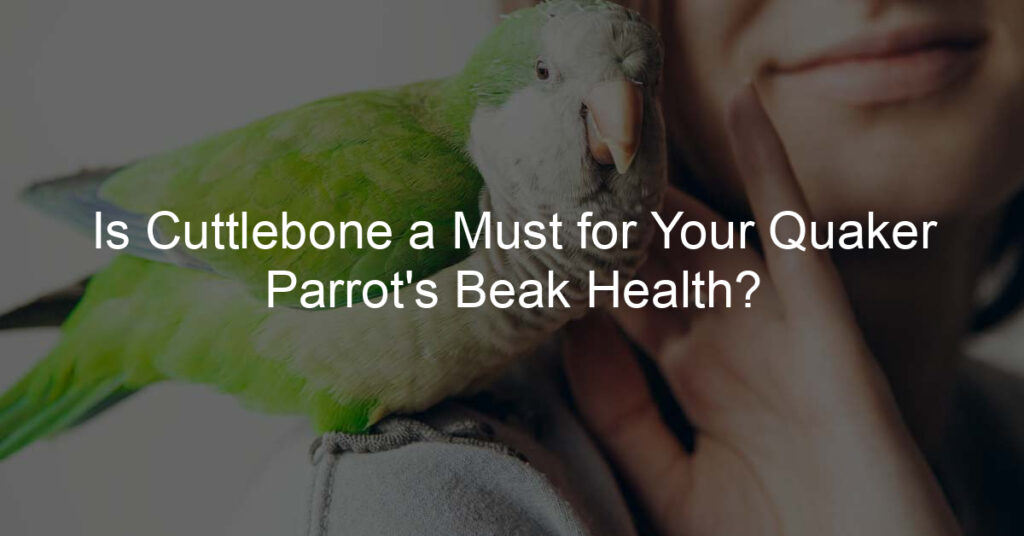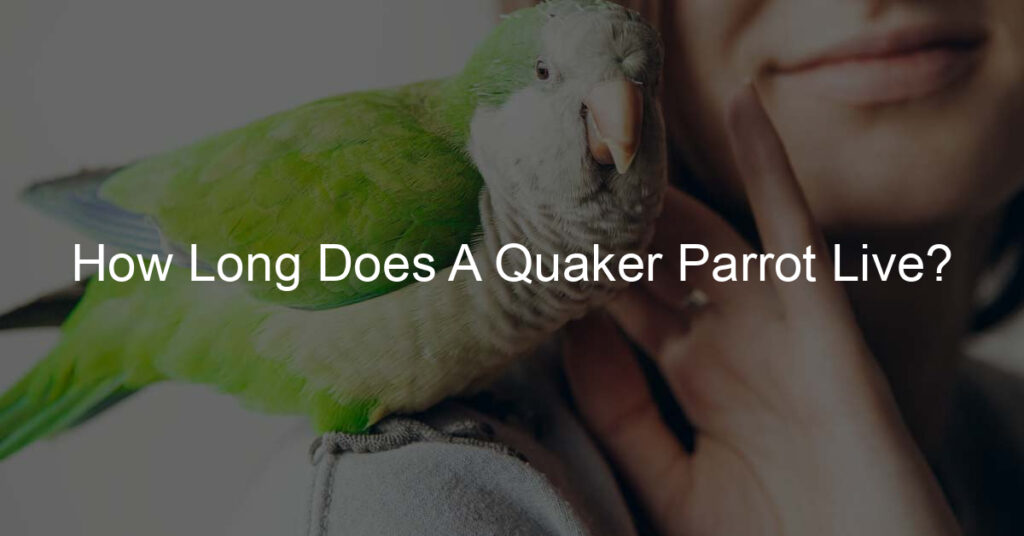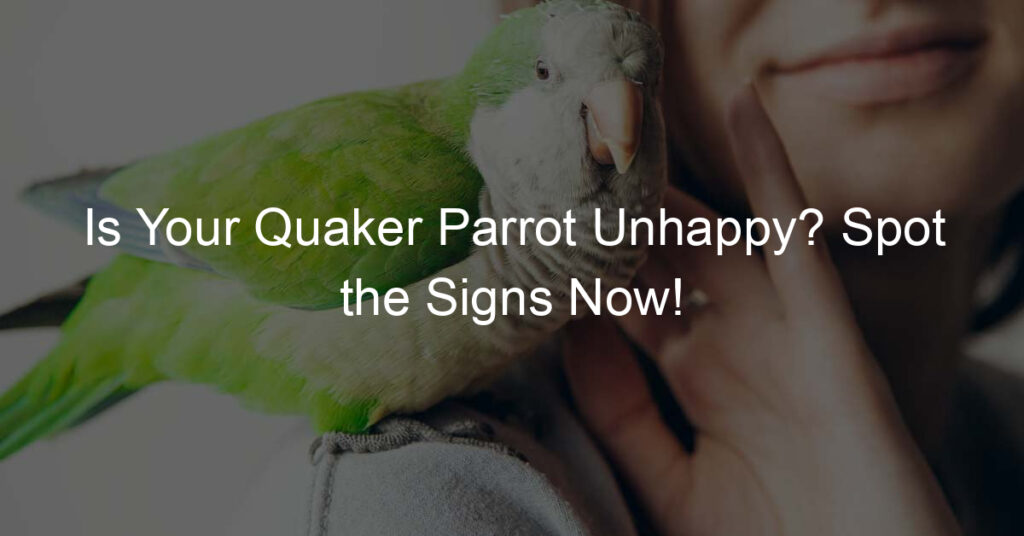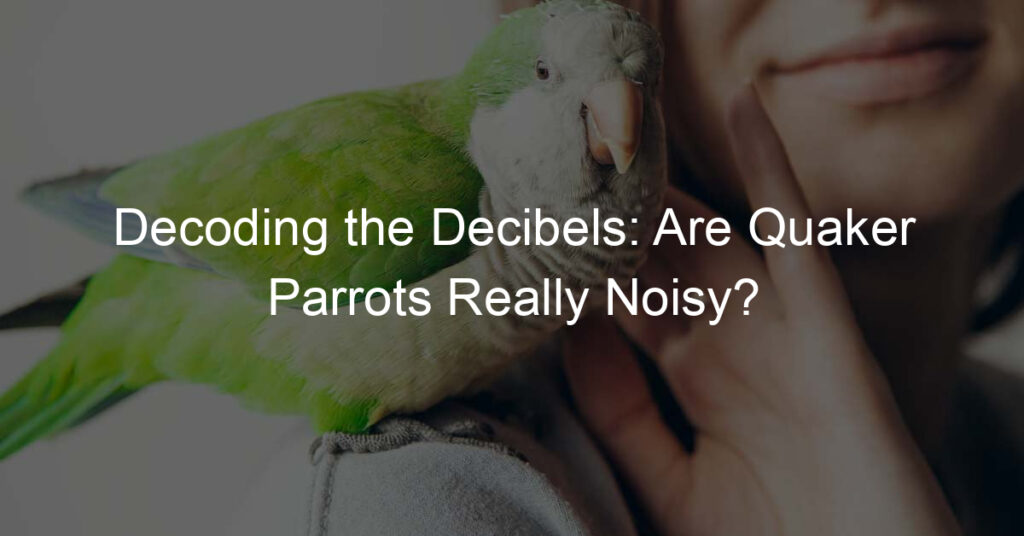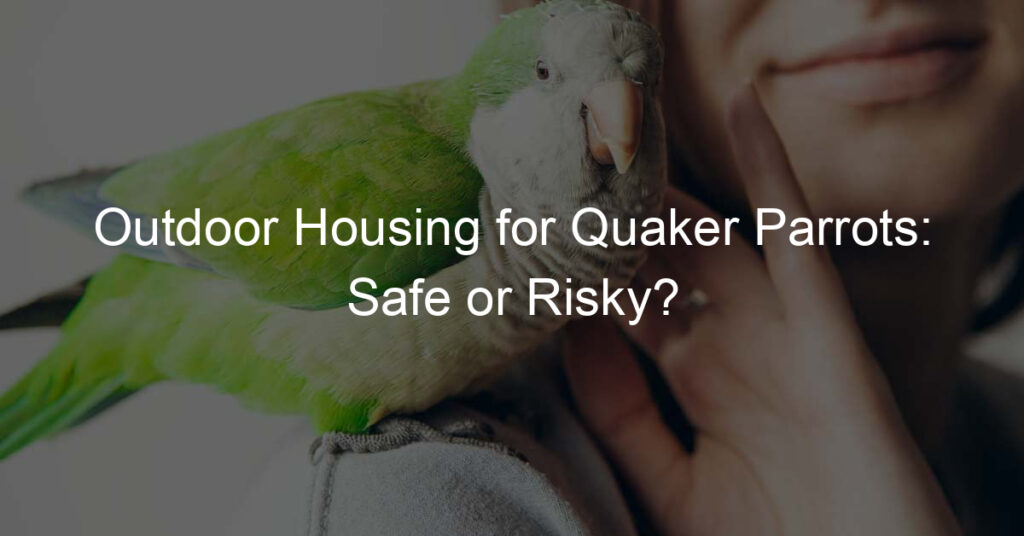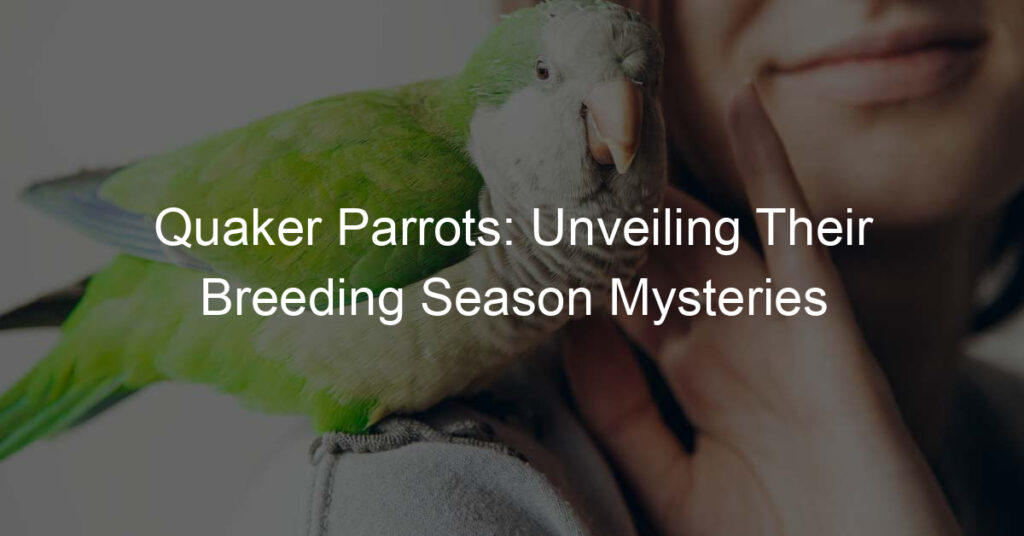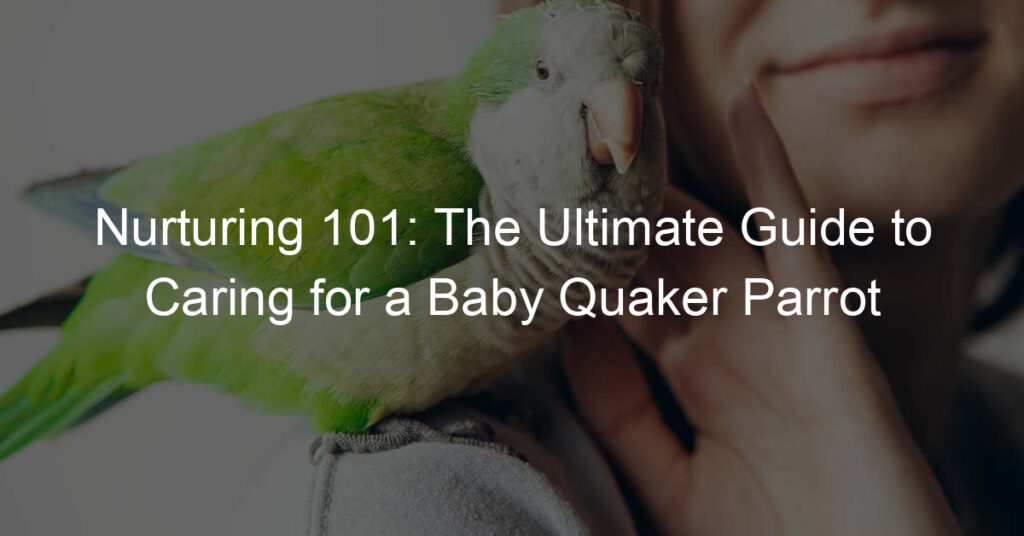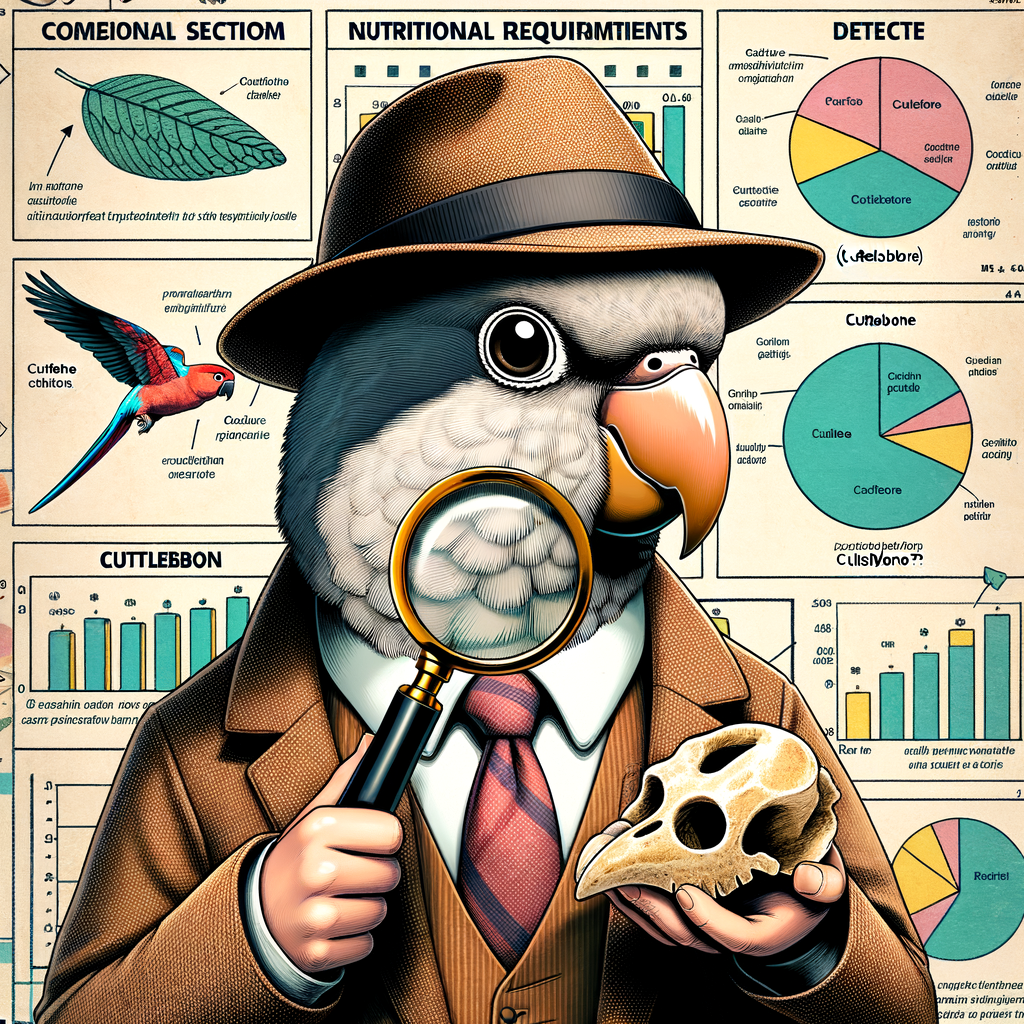
Introduction to Quaker Parrots Beak Health
Hey there, bird enthusiasts! Ever wondered why your Quaker parrot spends so much time fussing over its beak? Well, it’s not just because they’re vain (though we all know how much they love looking at themselves in the mirror!). Beak health is super important for these feathered friends. Let’s dive in and find out why!
- Importance of Beak Health in Quaker Parrots
- Common Beak Health Issues in Quaker Parrots
- Role of Diet in Maintaining Parrot Beak Health
Imagine trying to eat a sandwich without any teeth. Not so easy, right? Well, that’s what it’s like for a parrot with a poorly maintained beak. Their beaks are their utensils, their tools, and their weapons. A healthy beak means a happy, well-fed parrot who can defend itself and play like a champ. So, remember, a beak isn’t just a fashion statement, it’s a life essential!
Now, let’s talk about the ‘beak-y’ problems our Quaker friends might face. The most common issues include overgrowth, fractures, and infections. Overgrowth is like having super long fingernails that you can’t cut. Fractures are like breaking a tooth, and infections… well, they’re just a total party pooper. So, keep an eye on your parrot’s beak and make sure it’s in tip-top shape!
Did you know that what your parrot eats can affect its beak health? It’s true! A balanced diet helps keep their beaks strong and healthy. Think of it as their version of brushing and flossing. So, make sure your parrot is eating a good mix of seeds, fruits, and veggies. And remember, no junk food! We don’t want any couch potato parrots, do we?
So there you have it, folks! The 101 on Quaker parrot beak health. Keep these tips in mind and your parrot’s beak will be as strong and shiny as a knight’s armor. Stay tuned for more fun facts about our feathery friends!
Understanding Cuttlebone for Parrots
Hey there birdie buddies! Today, we’re going to dive into the fascinating world of cuttlebones. No, it’s not a new type of pirate sword, it’s actually a super important part of your parrot’s diet. So, let’s flap our wings and get started!
- What is Cuttlebone?
- Why is Cuttlebone Important in a Parrot’s Diet?
- Benefits of Cuttlebone for Parrots
Now, don’t get your feathers ruffled, but cuttlebone isn’t actually a bone. It’s the internal shell of a cuttlefish, a cousin of the squid and octopus. It’s soft, chalky, and full of good stuff for your parrot. Think of it as a multi-vitamin that your parrot can nibble on!
Imagine if you could chew on your daily vitamin instead of swallowing it. That’s what cuttlebone is like for your parrot. It’s packed with calcium, which is super important for keeping your parrot’s beak and bones strong. Plus, it helps them digest their food and even lay eggs. So, if your parrot is a lady, she’ll definitely appreciate some cuttlebone in her diet!
So, we’ve established that cuttlebone is like a super vitamin for your parrot. But what else does it do? Well, it also helps keep your parrot’s beak sharp and healthy. It’s like a nail file for birds! Plus, it can help keep your parrot entertained. Chewing on a cuttlebone is like a fun puzzle for them. So, it’s not just good for their health, but also for their happiness!
So, there you have it, folks! Cuttlebone is a must-have for any parrot owner. It’s like a chewable multi-vitamin, a beak sharpener, and a fun toy all in one. So, next time you’re at the pet store, don’t forget to pick up some cuttlebone for your feathered friend!
| Benefits of Cuttlebone |
|---|
| Provides essential calcium |
| Helps digestion |
| Keeps beak sharp and healthy |
| Entertains your parrot |
Quaker Parrots Diet and Nutrition
Ever wondered what makes Quaker parrots so chirpy and colorful? Well, it’s all about what they eat! Just like we need a balanced diet to stay healthy and happy, our feathered friends also need a variety of nutrients to keep their feathers shiny and their tweets melodious. Let’s dive into the world of parrot nutrition!
Essential Nutrients for Quaker Parrots
Just like humans, Quaker parrots need a balanced diet to stay healthy. This includes proteins, vitamins, minerals, and fats. Let’s take a closer look at each of these.
- Proteins
- Vitamins
- Minerals
- Fats
Proteins are like the building blocks for our Quaker parrots. They help in growth, repair, and maintenance of body tissues. So, if you want your parrot to have strong muscles to fly high, make sure to include a good amount of proteins in their diet. Foods like legumes, nuts, and seeds are packed with proteins.
Vitamins are like the magic potions for our parrots. They help in boosting their immune system, maintaining their vision, and keeping their skin and feathers shiny. Fruits and vegetables are a great source of vitamins. Remember, a colorful diet leads to a colorful parrot!
Minerals are the secret ingredients for strong bones and beaks. They also play a crucial role in nerve function and blood clotting. Foods like leafy greens, fruits, and cuttlebone are rich in minerals.
Fats are like the fuel for our parrots. They provide energy and help in the absorption of certain vitamins. But remember, too much of anything is bad. So, make sure to give fats in moderation. Foods like seeds and nuts are a good source of healthy fats.
So, there you have it! The secret recipe for a happy and healthy Quaker parrot. Remember, variety is the spice of life. So, mix and match these nutrients to give your parrot a balanced and tasty diet. And who knows, with the right diet, your parrot might just start singing your favorite song!
Role of Cuttlebone in Bird Diet
Now, let’s flap our wings and dive into the world of cuttlebones. What’s a cuttlebone, you ask? Well, it’s not a bone from a cuttle, because there’s no such thing as a cuttle! It’s actually a hard, chalky object found in cuttlefish, a type of squid. But enough about squids, let’s talk about how cuttlebones help our feathered friends, the Quaker parrots!
- Provides Essential Minerals
- Helps in Beak Trimming
- Acts as a Fun Chew Toy
Imagine you’re a bird, and you’re flying around, tweeting your heart out. You’re going to need some serious energy, right? That’s where cuttlebone comes in. It’s packed with calcium and other minerals that help keep birdie bones strong and healthy. It’s like a multivitamin, but for birds!
Have you ever seen a bird with a long, overgrown beak? It’s not a pretty sight, let me tell you! Birds need to keep their beaks in tip-top shape, and gnawing on a cuttlebone helps them do just that. It’s like a nail file, but for beaks!
And last but not least, cuttlebones are fun to chew on! Birds love to peck at things, and a cuttlebone provides hours of pecking pleasure. It’s like a chew toy, but for birds!
So there you have it, folks. Cuttlebones: they’re not just for cuttlefish anymore! They’re an essential part of any Quaker parrot’s diet, providing essential minerals, helping in beak trimming, and acting as a fun chew toy. So next time you’re at the pet store, don’t forget to pick up a cuttlebone for your feathered friend!
Quaker Parrot Health Care
Hey there, parrot pals! Let’s dive into the exciting world of Quaker parrot health care. It’s not just about teaching them to say “Polly wants a cracker”, you know!
Maintaining Parrot Beak Health
Now, let’s talk beaks. A parrot’s beak is like a Swiss army knife – it’s used for eating, climbing, playing, and even for showing affection. So, it’s super important to keep it in tip-top shape! Here are some top-notch tips to help you do just that:
- Regular Beak Inspections
- Proper Diet
- Providing Cuttlebone for Chewing
Just like you check your teeth in the mirror after eating spinach, you need to check your parrot’s beak regularly. Look for any discoloration, cracks, or overgrowth. Remember, a healthy beak is a happy beak!
Imagine eating nothing but potato chips all day. Sounds fun, right? But your dentist would have a field day! It’s the same for your parrot. A balanced diet of fruits, veggies, and grains will keep their beaks healthy and strong. So, swap those chips for some tasty birdie bites!
Ever heard of a cuttlebone? It’s not a bone, and it’s definitely not cuddly. It’s a hard, chalky object that parrots love to chew on. It helps keep their beaks trim and provides essential minerals. It’s like a toothbrush and vitamin supplement rolled into one! So, next time you’re at the pet store, pick up a cuttlebone. Your parrot will thank you!
So there you have it, folks! With regular inspections, a proper diet, and a handy-dandy cuttlebone, your Quaker parrot’s beak will be the talk of the town. Or at least, the talk of the birdcage!
Importance of Regular Vet Check-ups
Hey there, parrot parents! Ever wondered why your feathery friend needs to visit the vet regularly? Well, let’s dive into the world of parrot health care and find out!
- Early Detection of Health Issues
- Professional Beak Care
- Dietary Recommendations
Just like humans, parrots can also get sick. But unlike us, they can’t tell us when they’re feeling under the weather. That’s where our vet heroes come in! Regular check-ups can help spot health problems before they become serious. It’s like having a superpower that lets you see into the future of your parrot’s health! Cool, right?
Now, let’s talk beaks. Parrot beaks are like our nails – they keep growing and need regular care. But, you can’t just take a nail file to your parrot’s beak! That’s a job for the professionals. Vets have the right tools and know-how to keep your parrot’s beak in tip-top shape. So, let’s leave the beak grooming to the experts, shall we?
Ever wondered what your parrot should eat? Well, it’s not just crackers! Parrots need a balanced diet to stay healthy. But don’t worry, you don’t have to figure it out all by yourself. Your vet can give you the best dietary recommendations for your feathered friend. It’s like having a personal nutritionist for your parrot!
So, there you have it, folks! Regular vet check-ups are like a magic potion for your parrot’s health. They help detect health issues early, provide professional beak care, and offer dietary advice. So, don’t skip those vet visits!
Case Studies: Benefits of Cuttlebone for Parrots
Alright, folks, it’s time to dive into the exciting world of parrot health! We’ve got two amazing case studies that will make you say, “Wow, cuttlebone is the best thing since sliced bread… for parrots!” So, buckle up, and let’s go on a journey to explore the benefits of cuttlebone for our feathered friends.
-
Case Study 1: Improved Beak Health with Cuttlebone
Meet Polly, a Quaker parrot who loves to chat and chew. Polly’s human noticed that her beak was looking a bit dull and rough. Not cool, right? So, they introduced cuttlebone into her diet. After a few weeks, Polly’s beak was shiny and sharp, making her the envy of all the other parrots in the neighborhood. Polly’s human reported that she seemed happier and more active too. Now, Polly is a cuttlebone fan for life!
-
Case Study 2: Cuttlebone and Overall Parrot Health
Next up, we have Pedro, a Quaker parrot who was feeling a bit under the weather. Pedro’s human decided to give cuttlebone a try. Guess what? Pedro’s energy levels soared, and he started singing like a superstar. His feathers became more vibrant, and he even learned a new trick or two. Pedro’s human said, “Cuttlebone is like a magic potion for parrots!”
So, there you have it, folks! Cuttlebone isn’t just a fancy word; it’s a game-changer in the world of parrot health. Remember, a healthy parrot is a happy parrot. And a happy parrot makes a happy human. So, why not give cuttlebone a try?
Conclusion: Is Cuttlebone a Must for Your Quaker Parrot’s Beak Health?
Well, my feathered friends, we’ve squawked and squabbled our way through this topic, and now it’s time to wrap it up. Let’s put a birdie bow on this, shall we?
- Summary of Key Points
- Final Thoughts on the Importance of Cuttlebone for Parrots
First off, remember how we chatted about the importance of a Quaker parrot’s beak health? It’s like the Swiss Army knife of the bird world, used for eating, climbing, and even playing. Keeping it in tip-top shape is crucial!
Then, we dove beak-first into the world of cuttlebone. It’s not just a fancy birdie accessory, but a calcium-rich supplement that helps keep your parrot’s beak strong and sharp. Plus, it’s a great boredom buster!
We also pecked around the topic of diet and nutrition. Remember, a healthy parrot is a happy parrot, and a balanced diet is key. Cuttlebone can be a great addition, but it’s not a replacement for a varied diet.
Lastly, we looked at some real-life examples of parrots who’ve benefited from cuttlebone. From Polly who stopped plucking her feathers, to Pedro who’s beak was sharper than a pirate’s sword, the proof is in the parrot!
So, is cuttlebone a must for your Quaker parrot’s beak health? Well, as we’ve seen, it can certainly help. But remember, every parrot is unique, just like their owners. What works for Pedro might not work for Polly.
However, if you’re looking for a simple, natural way to boost your birdie’s beak health, cuttlebone is a great option. It’s like a day spa for their beak, and who doesn’t love a bit of pampering?
So, in conclusion, cuttlebone may not be a must, but it’s certainly a ‘why not?’. Your parrot’s beak will thank you, and who knows, they might even stop stealing your breakfast toast!
